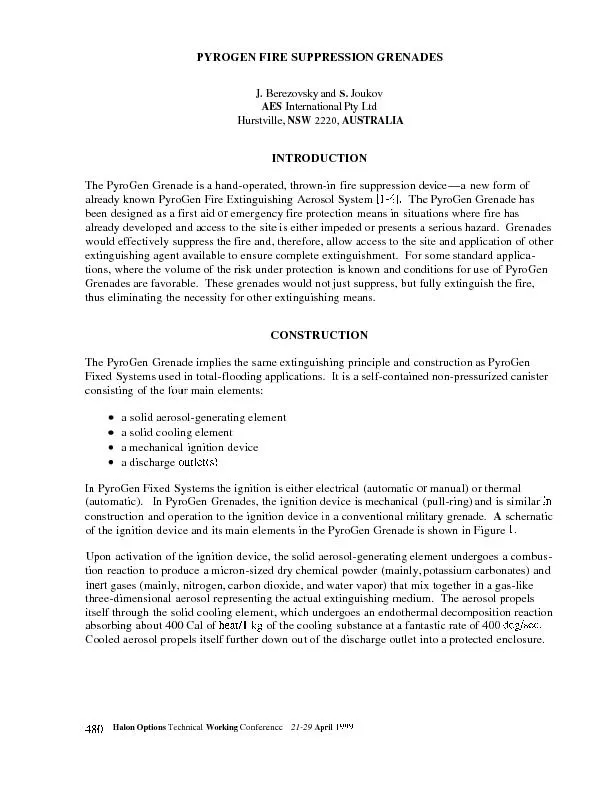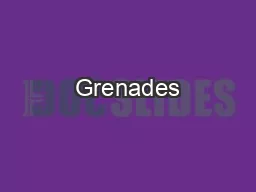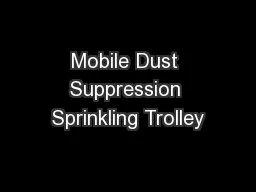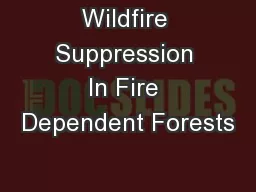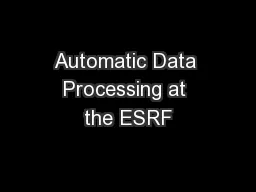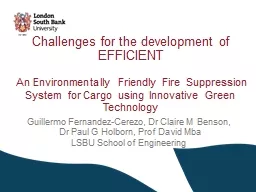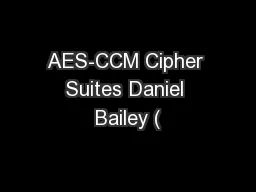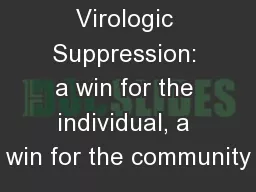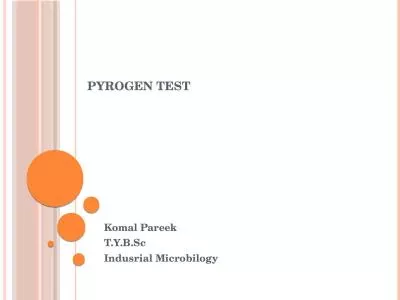PDF-PYROGEN FIRE SUPPRESSION GRENADES J. Berezovsky and S. Joukov AES Inte
Author : test | Published Date : 2016-04-20
141 a serious four main elements a solid aerosolgenerating element a solid cooling element a mechanical ignition device a discharge outlets In PyroGen Fixed Systems
Presentation Embed Code
Download Presentation
Download Presentation The PPT/PDF document "PYROGEN FIRE SUPPRESSION GRENADES J. Ber..." is the property of its rightful owner. Permission is granted to download and print the materials on this website for personal, non-commercial use only, and to display it on your personal computer provided you do not modify the materials and that you retain all copyright notices contained in the materials. By downloading content from our website, you accept the terms of this agreement.
PYROGEN FIRE SUPPRESSION GRENADES J. Berezovsky and S. Joukov AES Inte: Transcript
Download Rules Of Document
"PYROGEN FIRE SUPPRESSION GRENADES J. Berezovsky and S. Joukov AES Inte"The content belongs to its owner. You may download and print it for personal use, without modification, and keep all copyright notices. By downloading, you agree to these terms.
Related Documents

